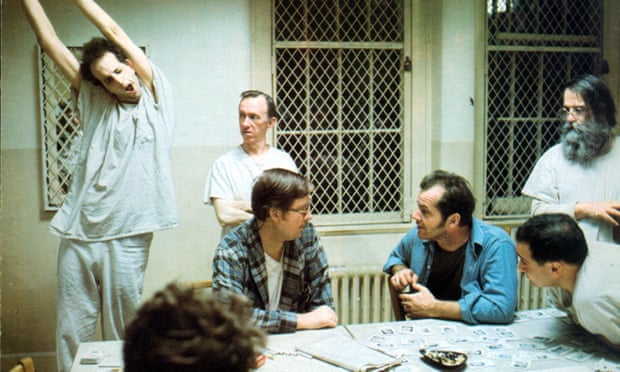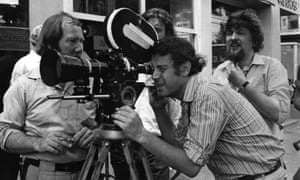- UID
- 20
- Online time
- Hours
- Posts
- Reg time
- 24-8-2017
- Last login
- 1-1-1970
|

One Flew Over the Cuckoo’s Nest, with Jack Nicholson (third from right), 1975. Photograph: Moviestore/Rex/Shutterstock
When Miloš Forman, who has died aged 86, travelled to Prague to shoot the film Amadeusin 1984, it was the first time he had set foot in his homeland for 16 years. He had fled communist Czechoslovakia in 1968 just before the Russians put an end to the Prague Spring.
In the US, when he was offered One Flew Over the Cuckoo’s Nest(1975), set in a state psychiatric hospital, he saw it as a metaphor for the conformist society from which he had escaped. Forman identified with McMurphy ( Jack Nicholson), the grinning antihero fighting the system as represented by Nurse Ratched, played with chilling authority by Louise Fletcher. McMurphy is finally lobotomised after attempting to throttle the nurse, who signified the way totalitarian regimes exact revenge on transgressors. It was something Forman knew about personally, having lived under nazism and Stalinism.
The picture, made at a cost of $3m, earned more than $50m. It was also the first movie since It Happened One Night (1934) to win all five top Oscars: best picture, best actor (Nicholson), best actress (Fletcher), best director and best screenplay adaptation. It was an especially sweet triumph for Forman, who had been struggling to get work when One Flew Over the Cuckoo’s Nest came along.
Born in Čáslav, near Prague, Forman was eight when his father, Rudolf Forman, a professor, and mother, Anna Švábová, a hotelier, died in Nazi concentration camps. He was brought up by two uncles and friends of his parents, and it was much later that he discovered that his biological father was a Jewish architect, Otto Kohn.
In 1950, aged 18, he enrolled in the newly founded Prague film school, Famu, and began directing documentaries for Czech television four years later. In 1963, Forman made two short films, one on a talent contest, and the other on a band competition, which revealed his keen eye for the minutiae of human behaviour and a taste for gently mocking simple pleasures. After these shorts, in which he gave documentary material fictional form, his first feature, Peter and Pavla (AKA Black Peter, 1964), gave his fictional material documentary form. By using mostly non-actors, improvised dialogue and filming in the streets, Forman brought a new vitality into Czech cinema.

Milos Forman filming Taking Off, 1971. Photograph: Universal/Kobal/Rex/Shutterstock
As sharply observed and satirically affectionate was A Blonde in Love (AKA Loves of a Blonde, 1965). It told of a shy romantic factory girl in a small town depleted of men, who falls in love with a visiting young pianist, but is made unwelcome by his parents when she pursues him to Prague. One of the most delightful sequences shows a group of middle-aged army reservists trying to pair off with some of the bored local girls at a dance. ▪ ▪ ▪
► Read the full note here: Source |
|